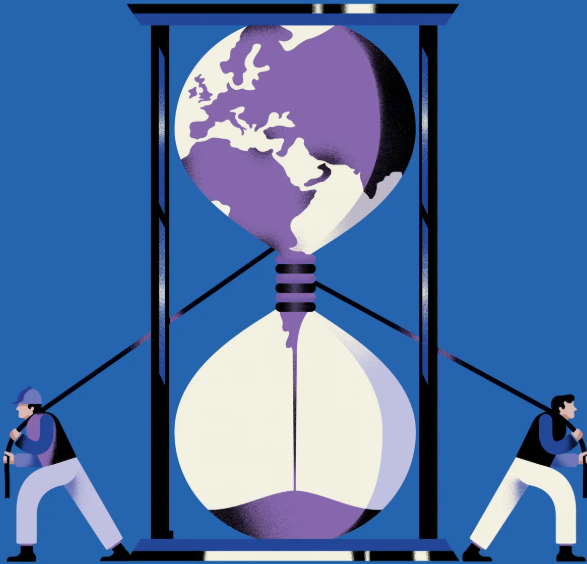Globalization’s Impact on Cultural Exchange and Social Integration

In today’s interconnected world, cultural exchange has become a crucial aspect of globalization, shaping how societies interact, learn, and grow. With the spread of media, migration, and technology, cultures are blending and influencing one another in ways that were once unimaginable. This blog explores the dynamic relationship between globalization and cultural exchange, examining how cultural practices, traditions, and values are shared globally while also discussing the challenges that come with this process.
The Essence of Cultural Exchange
Cultural exchange refers to the sharing of ideas, customs, values, and traditions between different societies. This exchange fosters mutual understanding and enriches communities by promoting global connections. At its best, cultural exchange enables individuals and groups to experience and appreciate cultures beyond their own, creating a bridge of respect and learning.
There are various ways cultural exchange takes place, including travel, media, education, and cuisine. People visiting new countries can immerse themselves in local traditions, while media platforms, such as movies, music, and television shows, offer a window into foreign cultures. For example, K-pop has become a global phenomenon, influencing music lovers worldwide, while Japanese anime has gained a massive following, becoming an integral part of youth culture globally.
In addition, the integration of foreign cuisines into everyday life, such as Indian curry becoming a staple in the UK, highlights how cultures merge through food. These forms of exchange occur more readily thanks to modern technology, making it easier than ever for cultural products to cross borders.
Globalization and Cultural Diversity
One of the key concerns in a globalized world is the potential loss of cultural diversity. Globalization can sometimes lead to cultural homogenization, where dominant cultures, particularly Western ones, spread widely, often overshadowing local traditions. The global reach of fast food chains, international fashion brands, and mainstream media can create a sense of uniformity, where diverse societies adopt similar lifestyles and values.
However, globalization also offers an opportunity to preserve and celebrate cultural diversity. In cities like New York, London, and Singapore, different cultures coexist, bringing their own traditions, languages, and arts. Cultural festivals, international cuisine, and traditional music are celebrated worldwide, proving that diversity can thrive in a connected world. Global exposure to different cultures can help break down stereotypes and build empathy, fostering a deeper understanding of one another.
Social Integration in a Globalized World
Migration is another major consequence of globalization, with millions of people moving across borders each year in search of better opportunities, education, or refuge. This movement leads to the blending of cultures but also presents challenges related to social integration. Migrants often bring their own customs and values, which may differ from those of their host country. As a result, cultural friction can arise when these differing traditions interact.
For successful integration, both migrants and host communities need to engage in open dialogue and respect each other’s values. Policies that promote inclusivity, such as providing access to education and social services for all citizens, are essential for fostering social cohesion in multicultural societies. It’s also crucial for both migrants and host communities to recognize and respect the importance of cultural exchange in bridging divides and building harmonious societies.
Education and Media’s Role in Promoting Cultural Exchange
Education plays a vital role in facilitating cultural exchange. International exchange programs and study abroad opportunities allow students to experience different cultures firsthand, broadening their perspectives and encouraging tolerance. Programs like Erasmus in Europe have proven effective in helping young people live in different cultural environments, promoting mutual understanding and empathy.
Similarly, the role of media in cultural exchange is profound. In today’s digital age, streaming services, social media platforms, and online content make it easier than ever for individuals to access cultural products from around the world. Movies, music, and news from one country can quickly reach a global audience, fostering cross-cultural understanding. However, media must strive for accurate and respectful representations to avoid perpetuating harmful stereotypes and misconceptions.
Challenges to Cultural Exchange and Social Integration
Despite the many benefits, there are challenges that hinder cultural exchange and social integration. One significant issue is cultural conflict, where differing values or practices clash, creating tensions within communities. Disparities in religious practices, gender roles, and family structures can lead to misunderstandings or even social unrest.
Another challenge is cultural appropriation, where elements of a marginalized culture are adopted by a dominant culture without proper respect or understanding. This often leads to the commodification of cultural practices, stripping them of their deeper significance and causing resentment. True cultural exchange should be based on mutual respect and learning, but in some cases, it risks becoming a one-sided appropriation.
Socioeconomic barriers also play a crucial role in hindering social integration. Migrant communities often face challenges such as limited access to education, healthcare, and employment opportunities, which can make it harder for them to fully integrate into their new society. Economic disparities can create social divides, making it more difficult for marginalized groups to benefit from the opportunities globalization offers.
The Future of Cultural Exchange and Social Integration
As globalization continues to advance, cultural exchange and social integration will evolve. One of the most exciting trends is the growth of digital platforms that facilitate cross-cultural connections. Social media, virtual communities, and digital collaboration tools allow individuals from different cultures to interact in real-time, sharing ideas, traditions, and art from all corners of the world.
However, as cultures become more interconnected, preserving cultural identities will remain a key challenge. Many societies are working to safeguard their unique cultural heritage while embracing the benefits of globalization. By supporting cultural preservation through education, tourism, and policy initiatives, countries can ensure that globalization does not lead to cultural erosion.
The future of cultural exchange lies in balancing the global with the local, embracing the diversity that globalization brings while also preserving the rich cultural traditions that make each society unique. Through inclusive policies, mutual respect, and a commitment to understanding, globalization can be a force for positive cultural interaction and integration.
Key Takeaways
Globalization has reshaped the way cultures interact, offering both opportunities and challenges. It has facilitated the sharing of ideas, art, traditions, and values across borders, enriching societies with diverse cultural expressions. However, issues such as cultural appropriation, conflicts, and economic disparity present significant hurdles to successful integration.
Moving forward, the success of cultural exchange will depend on how well societies manage the balance between embracing global interconnectedness and maintaining local identities. By promoting inclusive policies, fostering cultural respect, and ensuring equitable opportunities, globalization can become a powerful force for building more cohesive and diverse societies.


 English
English 












































































































































































































































































































































































